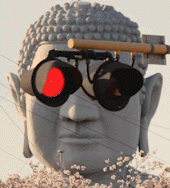| Hot Topics | |
|---|---|
Japan Losing Food Fight
25 posts
• Page 1 of 1
WTF?
So then we have a report that Japan cannot sufficiently feed itself; next we find that Japan is undertaking an export initiative for seafood. Is this another case of the right hand not know that the left hand is doing?
Japan, one of the least self-sufficient in terms of food production of all the world's developed countries, it is a particularly dangerous threat.
So then we have a report that Japan cannot sufficiently feed itself; next we find that Japan is undertaking an export initiative for seafood. Is this another case of the right hand not know that the left hand is doing?
http://www.pr-inside.com/japan-s-seafood-export-initiative-includes-r485955.htmJapan's Seafood Export Initiative Includes Free How-to DVD for Restaurants, Retailers, Distributors
Japan's latest initiative to expand the sale of its popular seafood products in the US includes a free, how-to DVD now available to restaurant owners, distributors, retailers and food writers.
The DVD offer is part of an export initiative that included a Japanese government-organized news conference, breakfast and pavilion at
the recent International Boston Seafood Show (IBSS).
The DVD produced by the Ministry of Agriculture, Forestry and Fisheries of Japan (MAFF) is ideal for American and Continental restaurants as well as supermarkets that want to broaden their offerings with authentic Japanese seafood cuisine. For a copy, together with printed recipes, members of the trade and food writers may contact MAFF's PR representative in Boston.
According to Toshinori Uoya, Export Promotion Officer of MAFF, Japan's goal is to sell $10 billion worth of seafood annually in the US in five years. To help achieve this goal, the Japanese government sponsored its first IBSS pavilion where 10 seafood suppliers exhibited products to an estimated 18,000 visitors. These included distributors, restaurant executives and retailers.
To assure adequate supplies, the Hon. Yoichi Suzuki, Consul General of Japan in Boston, told reporters during a Japanese government hosted breakfast and news conference that Japan consumes one-third of global production and that his nation is a world leader in implementing advanced sustainable resource management.
Harvard anthropologist Prof. Theodore Bestor, author of Tsukiji: The Fish Market at the Center of the World, (University of California Press, 2004) explained why Japan and seafood are so culturally interwoven. "No matter where one lives in this island nation, the sea is no farther that 250 kilometers away," said Bestor, adding that Tokyo's massive seafood market, Tsukiji is 10 times larger than the fabled Fulton Fish Market in New York and is surrounded by retail seafood markets and stalls.
Bestor noted, "Japan has four distinct seasons that influence the varieties of seafood and seafood dishes available throughout the year." He added that Japanese cuisine - including seafood -- offers surprising combinations of both flavor and textures. For example, bluefin sashimi wrapped in dried seaweed creates a harmonious taste sensation with a slight crunch that adds unexpected grace notes to the item.
Professor Corky Clark of The Culinary Institute of America in Hyde Park, NY said he was impressed by the commitment the Japanese government made to its first entry at the International Boston Seafood Show. "The timing seems right now that sushi and sashimi have become a mainstay of our cuisine," Chef Clark said.
The Japan Pavilion gave the industry a look -- and taste -- of a much wider range of authentic Japanese delicacies and species than one customarily finds in the US. Among the offerings were bonito with a grilled surface and both bluefin and yellowtail tuna as well beautifully marbled, super-premium sashimi cuts from yellowtail bellies.
Masatoshi Wakabayashi, Minister of Agriculture, Forestry and Fisheries, Government of Japan, noted, "Japanese cuisine is being accepted and is attracting more attention not only in North America, but throughout the world." -0- DVD and Press Contact: Pirozzolo Company Public Relations Dick Pirozzolo Tel: 781-235-9911 or email: [email="dick@Pirozzolo.com"]dick@Pirozzolo.com[/email] For general inquiries: TOYOTA TSUSHO AMERICA INC. 1618 SW 1st Avenue Suite 220 Portland OR 97201 Mr. Yuzo Takamaru Tel: 503-221-1550 FAX: 503-295-2717 E-mail: [email="Yuzo_Takamaru@taiamerica.com"]Yuzo_Takamaru@taiamerica.com[/email]
Photos available for this release: -0- How-to DVD from Japan is Free to Trade and Food Writers Visitors to the Japan Pavilion sampled exciting new sushi, sashimi and other treats The Japan pavilion offered a chance to sample a wide spectrum of sashimi varieties Cheddar and Cod is a popular snack in Japan First Government Sponsored Pavilion at International Boston Seafood Show
[font="Arial Black"][SIZE="7"]B[/SIZE][/font][font="Palatino Linotype"][SIZE="6"]u[/SIZE][/font][font="Comic Sans MS"][SIZE="5"]c[/SIZE][/font][font="Impact"][SIZE="6"]k[/SIZE][/font]
-

Bucky - Maezumo
- Posts: 1806
- Joined: Sat Dec 30, 2006 3:20 am
- Location: Left Coast
Bucky wrote:WTF?
So then we have a report that Japan cannot sufficiently feed itself]http://www.pr-inside.com/japan-s-seafood-export-initiative-includes-r485955.htm[/URL]
I think it's more along the lines of:
Sell "authentic Japanese seafood"tm at exhorbitant ridiculous prices, while buying food from elsewhere at cutthroat rates (and then artificially inflating the price back up again before actually selling it in Japan).
Ready made FG reply message below, copy, paste and fill in the blanks or select the appropriate items:
[color=DarkRed][size=84][size=75]But in [/SIZE][/color][/SIZE](SOME OTHER FUCKING PLACE WE AREN'T TALKING ABOUT) the (NOUN) is also (ADJECTIVE), so you are being ([font=Times New Roman][size=84][color=DarkRed][size=75]RACIST/ANTI-JAPANESE/NAZI/BLAH BLAH BLAH) just because (BLAH BLAH BLAH) is (OPTIONAL PREPOSITION) (JAPAN/JAPANESE)"[/SIZE]
[/color][/SIZE][/font]
-

ttjereth - Maezumo
- Posts: 1862
- Joined: Sat May 14, 2005 1:42 pm
- Location: Tokyo
Japan's hunger becomes a dire warning for other nations
http://business.theage.com.au/japans-hunger-becomes-a-dire-warning-for-other-nations/20080420-27ey.html
Justin Norrie, Tokyo
April 21, 2008
Page 1 of 2
MARIKO Watanabe admits she could have chosen a better time to take up baking. This week, when the Tokyo housewife visited her local Ito-Yokado supermarket to buy butter to make a cake, she found the shelves bare.
Justin Norrie, Tokyo
April 21, 2008
Page 1 of 2
MARIKO Watanabe admits she could have chosen a better time to take up baking. This week, when the Tokyo housewife visited her local Ito-Yokado supermarket to buy butter to make a cake, she found the shelves bare.
-

Taka-Okami - Maezumo
- Posts: 452
- Joined: Sun Apr 17, 2005 9:01 am
This has to do with the best quality of everything first going to Japan because that's where it could fetch the best price. Now, there is competition from China and other parts of the world that have accumulated vast wealth and given the scarcity of the top quality products, Japan may no longer be able to import those.
There is salmon and then there is great salmon, same with coffee, cocoa, and every comodity you can think of.
Once on a flight in Canada I sat next to this guy from British Columbia who is in fish farming. Talking about salmon, I said I did not like cooked salmon all that much. He said he was not surprised because he said "we never get to see the good salmon here because we send them all to Japan". Many years ago a forestry guy had told me the same thing about good quality lumber.
There is salmon and then there is great salmon, same with coffee, cocoa, and every comodity you can think of.
Once on a flight in Canada I sat next to this guy from British Columbia who is in fish farming. Talking about salmon, I said I did not like cooked salmon all that much. He said he was not surprised because he said "we never get to see the good salmon here because we send them all to Japan". Many years ago a forestry guy had told me the same thing about good quality lumber.
-

Jack - Posts: 1863
- Joined: Tue Oct 29, 2002 3:17 am
- Location: Tokyo
Jack wrote:This has to do with the best quality of everything first going to Japan because that's where it could fetch the best price. Now, there is competition from China and other parts of the world that have accumulated vast wealth and given the scarcity of the top quality products, Japan may no longer be able to import those.
There is salmon and then there is great salmon, same with coffee, cocoa, and every comodity you can think of.
Once on a flight in Canada I sat next to this guy from British Columbia who is in fish farming. Talking about salmon, I said I did not like cooked salmon all that much. He said he was not surprised because he said "we never get to see the good salmon here because we send them all to Japan". Many years ago a forestry guy had told me the same thing about good quality lumber.
utterly insightful
-

kusai Jijii - Maezumo
- Posts: 1286
- Joined: Fri Aug 31, 2007 8:42 am
- Location: Up Noriko
2triky wrote:..this humungous Akiburger.. 1,890-yen monster stands 20 cm tall.

_________
FUCK THE 2020 OLYMPICS!
FUCK THE 2020 OLYMPICS!
-

Taro Toporific - Posts: 10021532
- Images: 0
- Joined: Tue Sep 10, 2002 2:02 pm
Taro Toporific wrote:http://www.fuckedgaijin.com/forums/images/vbimghost/12948105507acc78.jpg[/img]
2 to 1 Noriko could enhale it without touching sides....
"There are those that learn by reading. Then a few who learn by observation. The rest have to piss on an electric fence and find out for themselves!"- Will Rogers

-

Greji - Posts: 14357
- Joined: Fri Jun 25, 2004 3:00 pm
- Location: Yoshiwara
Jack wrote:Blah blah Blah. Fucking Idiot.
It's a lot more insightful than the rest of the juvenile, glib, pathetic, replies. Fucking moron.
Jack, go have another tug to a Kumi Kodo vid.
-

kusai Jijii - Maezumo
- Posts: 1286
- Joined: Fri Aug 31, 2007 8:42 am
- Location: Up Noriko
Remember, Japan can only be the victim of cruel int'l market forces. That it has astronomical import tariffs on many types of food imports (700% on cheese) is beside the point!
"If there's a river, we'll dam it, and if there's a tree, we'll ram it - 'cause we Japanese are talkin' progress!"
-

Catoneinutica - Posts: 1953
- Joined: Tue Jan 24, 2006 12:23 pm
Jack wrote:Kumi Koda rocks. But how would you know? You can't get any pussy.
Good one. You should do stand-up. Who writes your material?
-

kusai Jijii - Maezumo
- Posts: 1286
- Joined: Fri Aug 31, 2007 8:42 am
- Location: Up Noriko
Import-dependent Japan fears rice and pickle diet
Reuters | Friday, 16 May 2008 - http://stuff.co.nz/4551208a12.html
Japan could find itself dining on rice, pickles and potatoes if global food supplies keep tightening and imports are cut off, the government warns.
Just 39 per cent of food in Japan is produced at home, the lowest percentage among the major industrialised countries, raising alarm among officials over food security as supplies fall and prices soar.
In a white paper on food and agriculture, the government said eating habits would change radically if the country no longer had access to food from abroad.
Breakfast would consist of a bowl of rice, pickles and boiled potatoes, while dinner would consist of rice, one baked sweet potato and a slice of fish. An egg would appear on the menu only once a week, it said.
"Farms in Japan would have to switch to growing potatoes so people can eat food high in calories," said a farm ministry official.
He said this example was included in the white paper to raise public awareness of Japan's low food self-sufficiency.
"The meals wouldn't be nutritionally balanced, but there wouldn't be a choice, since there would be no imported corn to feed livestock," he said.
Japan is urging people to eat more home-grown food to help raise its self-sufficiency rate to 45 per cent by 2015, but consumers have been reluctant to give up on noodles and bread.
Economists also say the target may be tough to reach as farmers age and fewer young people take up agricultural work.
Reuters | Friday, 16 May 2008 - http://stuff.co.nz/4551208a12.html
Japan could find itself dining on rice, pickles and potatoes if global food supplies keep tightening and imports are cut off, the government warns.
Just 39 per cent of food in Japan is produced at home, the lowest percentage among the major industrialised countries, raising alarm among officials over food security as supplies fall and prices soar.
In a white paper on food and agriculture, the government said eating habits would change radically if the country no longer had access to food from abroad.
Breakfast would consist of a bowl of rice, pickles and boiled potatoes, while dinner would consist of rice, one baked sweet potato and a slice of fish. An egg would appear on the menu only once a week, it said.
"Farms in Japan would have to switch to growing potatoes so people can eat food high in calories," said a farm ministry official.
He said this example was included in the white paper to raise public awareness of Japan's low food self-sufficiency.
"The meals wouldn't be nutritionally balanced, but there wouldn't be a choice, since there would be no imported corn to feed livestock," he said.
Japan is urging people to eat more home-grown food to help raise its self-sufficiency rate to 45 per cent by 2015, but consumers have been reluctant to give up on noodles and bread.
Economists also say the target may be tough to reach as farmers age and fewer young people take up agricultural work.
-

ichigo partygirl - Posts: 1521
- Joined: Sun Jan 16, 2005 5:35 pm
- Location: Sydney, Australia
ichigo partygirl wrote:Import-dependent Japan fears rice and pickle diet
Reuters | Friday, 16 May 2008 - http://stuff.co.nz/4551208a12.html
Japan could find itself dining on rice, pickles and potatoes if global food supplies keep tightening and imports are cut off, the government warns.
Just 39 per cent of food in Japan is produced at home, the lowest percentage among the major industrialised countries, raising alarm among officials over food security as supplies fall and prices soar.
In a white paper on food and agriculture, the government said eating habits would change radically if the country no longer had access to food from abroad.
Breakfast would consist of a bowl of rice, pickles and boiled potatoes, while dinner would consist of rice, one baked sweet potato and a slice of fish. An egg would appear on the menu only once a week, it said.
"Farms in Japan would have to switch to growing potatoes so people can eat food high in calories," said a farm ministry official.
He said this example was included in the white paper to raise public awareness of Japan's low food self-sufficiency.
"The meals wouldn't be nutritionally balanced, but there wouldn't be a choice, since there would be no imported corn to feed livestock," he said.
Japan is urging people to eat more home-grown food to help raise its self-sufficiency rate to 45 per cent by 2015, but consumers have been reluctant to give up on noodles and bread.
Economists also say the target may be tough to reach as farmers age and fewer young people take up agricultural work.
You'd think at some point someone in the government would think they need to start making better, bigger, more efficient farms like the rest of the planet, but instead they just suggest that people eat more of the over priced local produce coming out of the existing completely inefficient system...
Ready made FG reply message below, copy, paste and fill in the blanks or select the appropriate items:
[color=DarkRed][size=84][size=75]But in [/SIZE][/color][/SIZE](SOME OTHER FUCKING PLACE WE AREN'T TALKING ABOUT) the (NOUN) is also (ADJECTIVE), so you are being ([font=Times New Roman][size=84][color=DarkRed][size=75]RACIST/ANTI-JAPANESE/NAZI/BLAH BLAH BLAH) just because (BLAH BLAH BLAH) is (OPTIONAL PREPOSITION) (JAPAN/JAPANESE)"[/SIZE]
[/color][/SIZE][/font]
-

ttjereth - Maezumo
- Posts: 1862
- Joined: Sat May 14, 2005 1:42 pm
- Location: Tokyo
ttjereth wrote:You'd think at some point someone in the government would think they need to start making better, bigger, more efficient farms like the rest of the planet, but instead they just suggest that people eat more of the over priced local produce coming out of the existing completely inefficient system...
Part of it is political, I think. One of the LDP's core constituencies has always been rural farmers.
- 2triky
- Maezumo
- Posts: 2513
- Joined: Fri Oct 28, 2005 7:50 am
2triky wrote:Part of it is political, I think. One of the LDP's core constituencies has always been rural farmers.
That's fine, just have the bastards make larger farms. I knew an absolute ton of "farmers" when I lived out in the boonies, but the vast majority of them had normal jobs too. The only farmers I've met here who farmed full-time were retirees who still relied on pensions for a decent portion of their income.
The only place in Japan I've seen a farm even remotely resembling something you'd see in most other developed countries (as opposed to the majority that are about the size of a decent backyard in the boonies in the states) is Hokkaido.
Ready made FG reply message below, copy, paste and fill in the blanks or select the appropriate items:
[color=DarkRed][size=84][size=75]But in [/SIZE][/color][/SIZE](SOME OTHER FUCKING PLACE WE AREN'T TALKING ABOUT) the (NOUN) is also (ADJECTIVE), so you are being ([font=Times New Roman][size=84][color=DarkRed][size=75]RACIST/ANTI-JAPANESE/NAZI/BLAH BLAH BLAH) just because (BLAH BLAH BLAH) is (OPTIONAL PREPOSITION) (JAPAN/JAPANESE)"[/SIZE]
[/color][/SIZE][/font]
-

ttjereth - Maezumo
- Posts: 1862
- Joined: Sat May 14, 2005 1:42 pm
- Location: Tokyo
ttjereth wrote:That's fine, just have the bastards make larger farms. I knew an absolute ton of "farmers" when I lived out in the boonies, but the vast majority of them had normal jobs too. The only farmers I've met here who farmed full-time were retirees who still relied on pensions for a decent portion of their income.
The only place in Japan I've seen a farm even remotely resembling something you'd see in most other developed countries (as opposed to the majority that are about the size of a decent backyard in the boonies in the states) is Hokkaido.
Well with the salient discussion of rising food prices due to increases in the cost of inputs such as energy, one would think talk of increasing efficiencies in agriculture would be a timely concern. I don't have a grasp of the dynamic in Japanese agriculture but dependency on foreign foodstuffs has got to be troubling given the current trends. Does Japan even boast corporate agro-businesses like ADM (Archer Daniel Midlands) in the States? I figure one would have to get "big enough" to enjoy certain economies of scale.
- 2triky
- Maezumo
- Posts: 2513
- Joined: Fri Oct 28, 2005 7:50 am
http://www.guardian.co.uk/commentisfree/2008/jun/10/food.globaleconomy
Japan doesn't need bigger more efficient farms, it just needs more peasants
There is an inverse relationship between the size of farms and the amount of crops they produce per hectare. The smaller they are, the greater the yield.
In some cases, the difference is enormous. A recent study of farming in Turkey, for example, found that farms of less than one hectare are 20 times as productive as farms of more than 10 hectares. Sen's observation has been tested in India, Pakistan, Nepal, Malaysia, Thailand, Java, the Philippines, Brazil, Colombia and Paraguay. It appears to hold almost everywhere.
Japan doesn't need bigger more efficient farms, it just needs more peasants
"It abbs abundant frightness to pleasure tabie" - Lucir Japanese fryingpan
-

ramchop - Maezumo
- Posts: 1222
- Joined: Fri Nov 29, 2002 5:11 pm
- Location: in the box mansion
ramchop wrote:http://www.guardian.co.uk/commentisfree/2008/jun/10/food.globaleconomy
Japan doesn't need bigger more efficient farms, it just needs more peasants ]
It only holds true in places where there is no benefit to economy of scale. If you are using the exact same methods (mostly by hand) on the larger plots than sure, but otherwise it doesn't work out. Look at the countries they picked as examples, not exactly leaders in argicultural technological invotation and distribution: India, Pakistan, Nepal, Malaysia, Thailand, Java, the Philippines, Brazil, Colombia and Paraguay...But the green revolution in agriculture, characterized basically by a capital-intensive technology, has opened up for the farmers new dimension of growth possibilities. Most of the empirical studies conducted with respect to farm size and productivity mention the possibility of weakening or even disappearance of the inverse relationship, particularly in regions that have experienced new agricultural technology. This is mainly because even small farmers have certain advantages over large farmers in labour-intensive techniques, these are expected to be counter balanced or even superseded as capital--intensive techniques are adopted by large farmers in a situation of unequal access to capital resources.
http://www.questia.com/googleScholar.qs ... 5007672399
(PDF file)
Ready made FG reply message below, copy, paste and fill in the blanks or select the appropriate items:
[color=DarkRed][size=84][size=75]But in [/SIZE][/color][/SIZE](SOME OTHER FUCKING PLACE WE AREN'T TALKING ABOUT) the (NOUN) is also (ADJECTIVE), so you are being ([font=Times New Roman][size=84][color=DarkRed][size=75]RACIST/ANTI-JAPANESE/NAZI/BLAH BLAH BLAH) just because (BLAH BLAH BLAH) is (OPTIONAL PREPOSITION) (JAPAN/JAPANESE)"[/SIZE]
[/color][/SIZE][/font]
-

ttjereth - Maezumo
- Posts: 1862
- Joined: Sat May 14, 2005 1:42 pm
- Location: Tokyo
25 posts
• Page 1 of 1
Who is online
Users browsing this forum: No registered users and 2 guests


